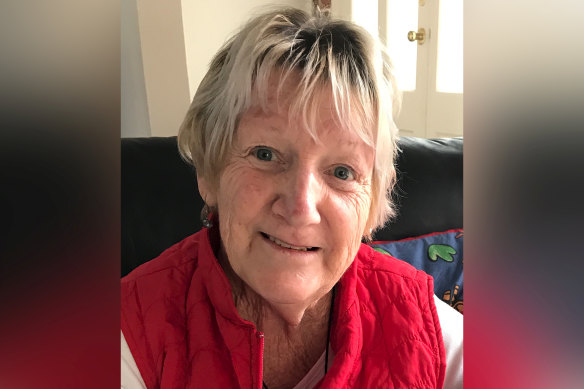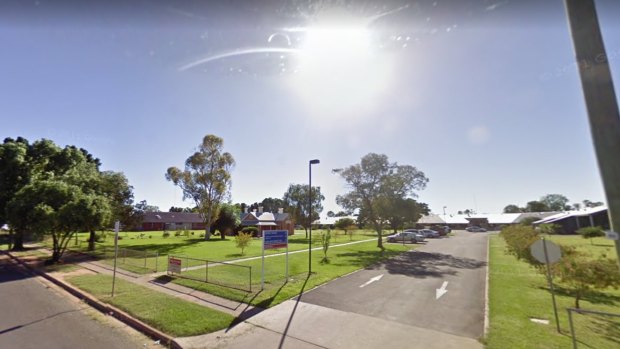A woman bled to death in the emergency department of a regional NSW hospital that had no doctors physically present because authorities had replaced face-to-face doctors with treatment via videolink outside business hours.
Doctors and patients have voiced anger and alarm over the moves to treat critically ill patients via teleconference in at least seven hospitals across the Western NSW Local Health District, which spans 31 per cent of NSW.

Dawn Trevitt, 66, died last month while being treated by teleconference in a NSW emergency department.
In another example of the practice, a non-verbal patient who turned up to an emergency department in central-western NSW was offered a video conference with a doctor in Switzerland.
Some postcodes targeted for the changes have large elderly and Indigenous populations and extremely high rates of disadvantage, with preventable deaths up to 31 per cent higher than the state average and mortality rates up to 94 per cent higher.
"We couldn’t believe this is what a community has to live with," said Hayley Olivares, whose mother died from haemorrhaging while being treated by a doctor over teleconference in Gulgong Hospital, near Mudgee.
Dawn Trevitt, 66, was rushed to the emergency department – where only nurses were physically present – last month with dangerously low blood pressure.
She died within an hour.
Ms Olivares, who lives in Canberra, was stunned to discover the doctor had been treating her mother remotely when it was mentioned in passing by a police officer.
She said the case was referred to the coroner because the doctor wasn’t comfortable signing off on the cause of death, which was ultimately determined to be a gastrointestinal bleed that sent Mrs Trevitt into cardiac arrest.
Mrs Trevitt, a school teacher, has been remembered as a "lively and funny and energetic woman".
Her family is tormented over whether the outcome could have been different had there had been a doctor on site.
"I really don’t want to see another family have the same experience," Ms Olivares said.
A spokesperson for the Western NSW Local Health District said it offered sincere condolences to Mrs Trevitt’s family and would undertake a review.
Gulgong has not had a doctor inside its hospital walls since June, when the town’s doctor was informed his contract with the hospital would not be renewed by the health district.
The health district has also failed to renew the contract of Rural and Remote Medical Services (RARMS), a non-profit organisation providing doctors to hospitals at Bourke, Walgett, Lightning Ridge, Brewarrina, Coonamble and Collarenebri.
The health district put the contract to tender last month, revealing it would now allow a mix of face-to-face doctors and telehealth in the hospitals.
Under new "minimum requirements" in the documentation, doctors will have to be physically present between 8am and 6pm on certain weekdays. Video conferencing can be offered at all other times.
A doctor will have to be present at least one day a week in Collarenebri, two days a week in Brewarrina, three days a week in Lightning Ridge and Coonamble, and five days a week in Bourke and Walgett.
Walgett is the largest of the towns, with a population of 6100.
Dr Phillip Jolly works in Lightning Ridge, servicing both the medical practice as a GP and the hospital.
He warned the "dangerous and inappropriate" changes could cost lives and would take "further resources away from an impoverished health system".

Bourke Hospital, also known as a Multi-Purpose Service. Credit: Google
Dr Jolly said the initiative appeared to be being introduced by stealth as the new normal for rural communities.
"Telehealth should be a service for places that can’t get medical staff, not a service that replaces medical staff," Dr Jolly said.
"If we’re going down the path of hospitals not having doctors physically in them, that should be a policy discussed at a political level."
Another doctor with knowledge of the system, who spoke on the condition of anonymity, said patients would have to hope to have "your heart attack between nine and five".
"It’s much easier to service Bourke from a doctor sitting there in Balmain on his bum and leave the nurses to deal with a difficult patient with half a leg cut off, or a spear in his leg, or a car accident," the doctor said.
A spokeswoman for the Western NSW Local Health District rejected suggestions the services were being cut back.
She stressed each hospital would continue to have full-time access to a doctor, whether physically or virtually, and the on-site hours were an "absolute minimum".
The aim of the tender was to secure sustainable access to medical services for the hospitals, the spokeswoman said.
"The use of innovative telehealth technology is commonplace in health facilities around the world," the spokeswoman said, noting it had been used in facilities much larger than the hospitals covered by the tender.
She said the health district had been successfully operating a virtual service to assist on-site staff for years, and it would be available to the successful tenderer.
A woman, who asked not to be named, turned up to the Gulgong Hospital’s emergency department earlier this year with a family member who was in severe pain and unable to speak.
They were put onto a teleconference with an Australian doctor who was in Geneva, Switzerland.
She said the nurses and the doctor were doing a "brilliant job", but she was concerned for non-verbal patients who did not have a relative to advocate on their behalf.
Sharelle Fellows, who has been circulating a petition against the move, stressed Gulgong was popular with tourists and grey nomads and did not have a dwindling population.
Gulgong doctor Nebras Yahya told the local ABC that contract negotiations had broken down because the health district wanted to reduce his pay by 40 per cent and support more patients with telehealth.
The spokeswoman for the health district said it was actively recruiting for a visiting medical officer for the hospital but the process had been hampered by COVID-19.
Recruitment for regional areas was a challenge nationwide regardless of financial incentives, she said. The hospital had a budget of more than $3 million last financial year.
The number of elderly people in Bourke is expected to double by 2036. Mayor Barry Hollman slammed the proposal as "abhorrent".